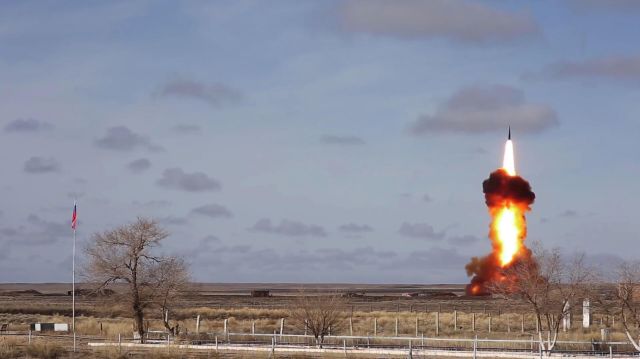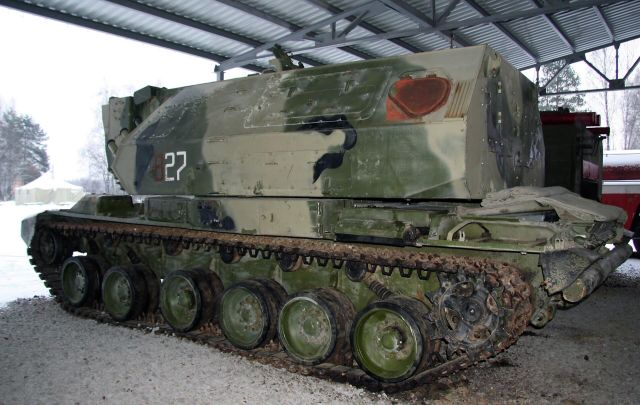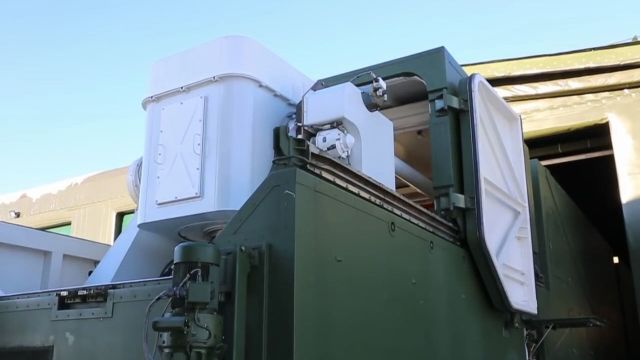The world's leading armies are returning to the development of combat lasers
MOSCOW, January 4 — RIA Novosti, Andrey Kotz. By the 21st century, many defense industries have hit a ceiling of opportunities. Today it is difficult, for example, to make an automatic bullet fly faster, and a high—precision weapon to hit even more accurately. Scientists and military personnel from different countries have been trying to make a technological breakthrough for many years. One of the promising areas is combat lasers, which have been used in Russia since the Soviet era. How domestic engineers surprised the world — in the material of RIA Novosti.
Air defense and missile defense
In the Soviet Union, the development of combat lasers began in the 1960s - in the interests of the country's air and missile defense. Prototypes were tested at the Sary-Shagan test site in Kazakhstan in a classified mode. We implemented several programs that were closed with the collapse of the USSR.
The most famous are Terra and Omega. As part of the first in the 1970s, the Vimpel Design Bureau built a test complex with a high-energy photodissociation laser with an energy of more than 1 MJ at the test site. It was supposed to be used to destroy the head of a ballistic missile in the final section of the trajectory. The laser was supposed to be the last echelon of the A-35 missile defense system that had just entered service.

The test launch of a new missile of the Russian missile defense system at the Sary-Shagan test site. Freeze frame of the video published by the Ministry of Defense of the Russian Federation
Image source: © RIA Novosti / Ministry of Defense of the Russian Federation
But tests have shown that the beam power is not enough. Later, the project was closed, and the experimental complex was transferred to Kazakhstan. Everything of value was removed from the facility, and now it is abandoned.
According to the Omega program, the Strela Design Bureau began developing high-power laser weapons for air defense purposes in 1965. It is estimated that the energy required to hit a flying target should be the same as the total kinetic energy of the fragments of the warhead of the surface—to-air missile. The designers were faced with the task of creating an installation with an energy of 8-10 MJ. And they did it — they built the experimental complex 73T6 Omega-2M, in which a high-speed open-type carbon dioxide laser with electronic pumping acted as a generator of powerful radiation.
The tests of the complex were successful — on September 22, 1982, he shot down a radio-controlled target aircraft RUM-2B in the air. After that, we decided to create a mobile version of the combat laser. However, this weapon did not go into mass production, as it could not surpass the existing anti-aircraft missile systems in terms of technical characteristics. In addition, the laser turned out to be too complicated, expensive and required a lot of electricity.
"Laser Gunship"
In 2020, the US Air Force announced that it intends to install a 60-kilowatt laser installation on the AC-130 artillery support aircraft. The Americans expect to use it to disable lightly armored enemy equipment, blind soldiers and surveillance devices.
However, the USSR had its own "laser gunship" already during the Cold War. In the summer of 1981, the A-60 experimental flying laboratory based on the Il-76 with a megawatt laser on board took to the air. To accommodate the installation, the basic structure was significantly redesigned.
In the bow, instead of the standard weather radar, a fairing with guidance laser equipment was placed. The top of the fuselage between the wing and the keel was cut out and huge flaps were placed hiding the turret with the main radiator. And turbogenerators of the complex's power system were installed on the sides under the fairings. The placement of the laser cannon was originally decided: in order not to spoil the aerodynamics of the aircraft with another fairing, the optical head of the laser was made retractable.
The primary purpose of the flights was to study the properties of the laser in the atmosphere. Then the scenario of hitting enemy satellites and reconnaissance assets was added.
However, the program encountered unexpected difficulties. In June 1986, the first prototype of the A-60 burned down at the Chkalovsky airfield as a result of an accident. Later, a second "flying laboratory" was built, which is still being tested today. Back in 2012, the Russian Defense Ministry ordered the resumption of work on an aviation laser. There are no details about the future of the project.
"Scorchers" of optics
In the USSR, the development of combat lasers was also carried out for the ground forces. By the end of the 1980s, specialists from NPO Astrophysics had created the 1K17 Compression self-propelled laser system on the chassis of the Msta-S self-propelled howitzer. The combat vehicle was designed to counteract the optoelectronic devices of the enemy - he burned out the photocells or matrix of an optoelectronic device, or even the eye of an observer, with a directed laser beam.
Self-propelled laser complex 1K17 "Compression"
Image source: CC BY-SA 4.0 / Vitaly V. Kuzmin / Self-propelled laser system 1K17 Szhatie / Cropped image
The turret of the self-propelled gun was significantly enlarged to accommodate optoelectronic equipment. In the front part, instead of a cannon, an optical unit of 15 lenses was installed.
An artificial ruby crystal weighing 30 kilograms was grown especially for 1K17. Each of the 12 optical channels of the multichannel laser was equipped with an individual guidance system. The complex could hit the target with beams of different wavelengths, which ensured reliable blinding of enemy devices, even those protected by light filters. The laser generators were supposed to be powered by an autonomous auxiliary power plant located at the rear of the tower.
In December 1990, a prototype car was created. In 1992, it passed state tests and was recommended for adoption. The collapse of the USSR and the subsequent wholesale cuts in the financing of the "defense industry" prevented it. The only sample of the "Compression" is kept in the Military Technical Museum in the village of Ivanovskoye near Moscow.

Self-propelled laser complex 1K17 "Compression"
Image source: CC BY-SA 4.0 / Vitaly V. Kuzmin / Self-propelled laser system 1K17 Szhatie / Cropped image
The main problem of such complexes is low efficiency. Such weapons need very powerful generators, which significantly increases the weight of the self-propelled unit. In addition, the "scorcher" can only work on direct fire. And in modern combat, whoever discovered whom first won. To lose an expensive complex with a 30-kilogram ruby from an anti—tank missile strike is an unacceptable waste.
There is not much information about the combat laser program in modern Russia. In 2014, the Chief of the General Staff of the Armed Forces, Yuri Baluyevsky, said that work on such weapons was underway, but did not go into details. And on March 1, 2018, President Vladimir Putin announced in a message to the Federal Assembly a laser complex, later called Peresvet. Most of the information about these weapons is classified, however, according to experts, they are intended for air and missile defense. It is known that Peresvet is already on experimental combat duty.

